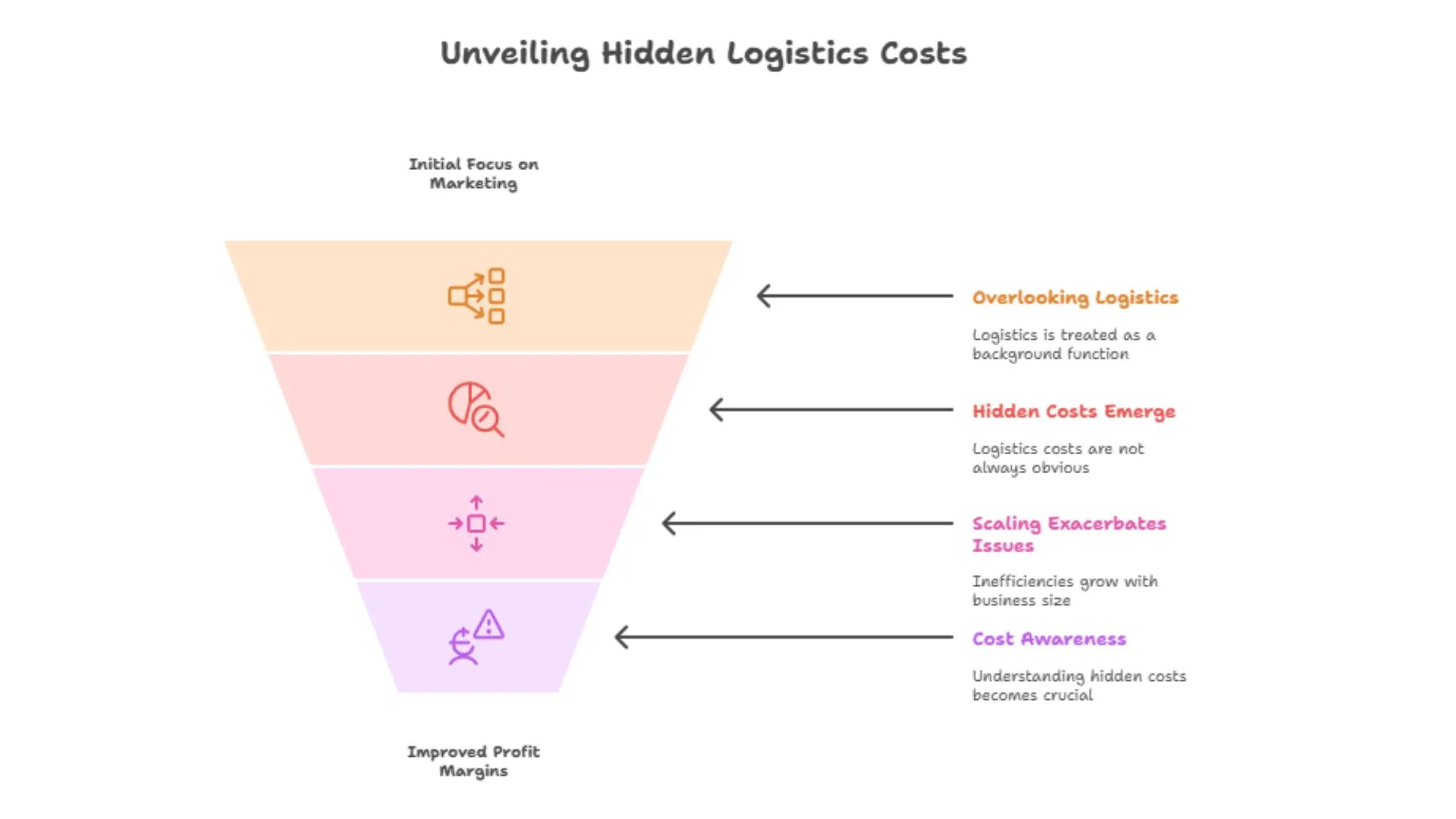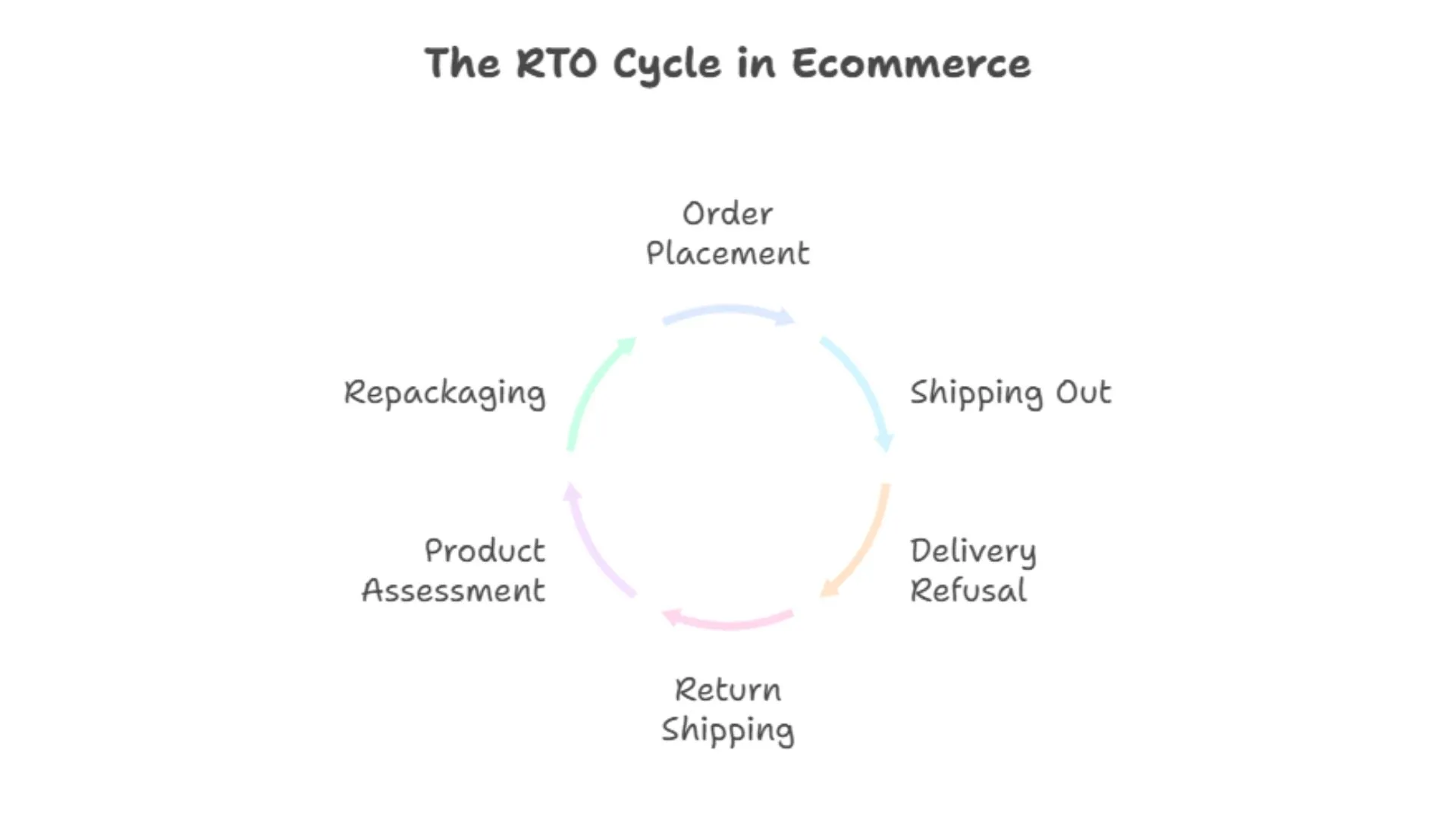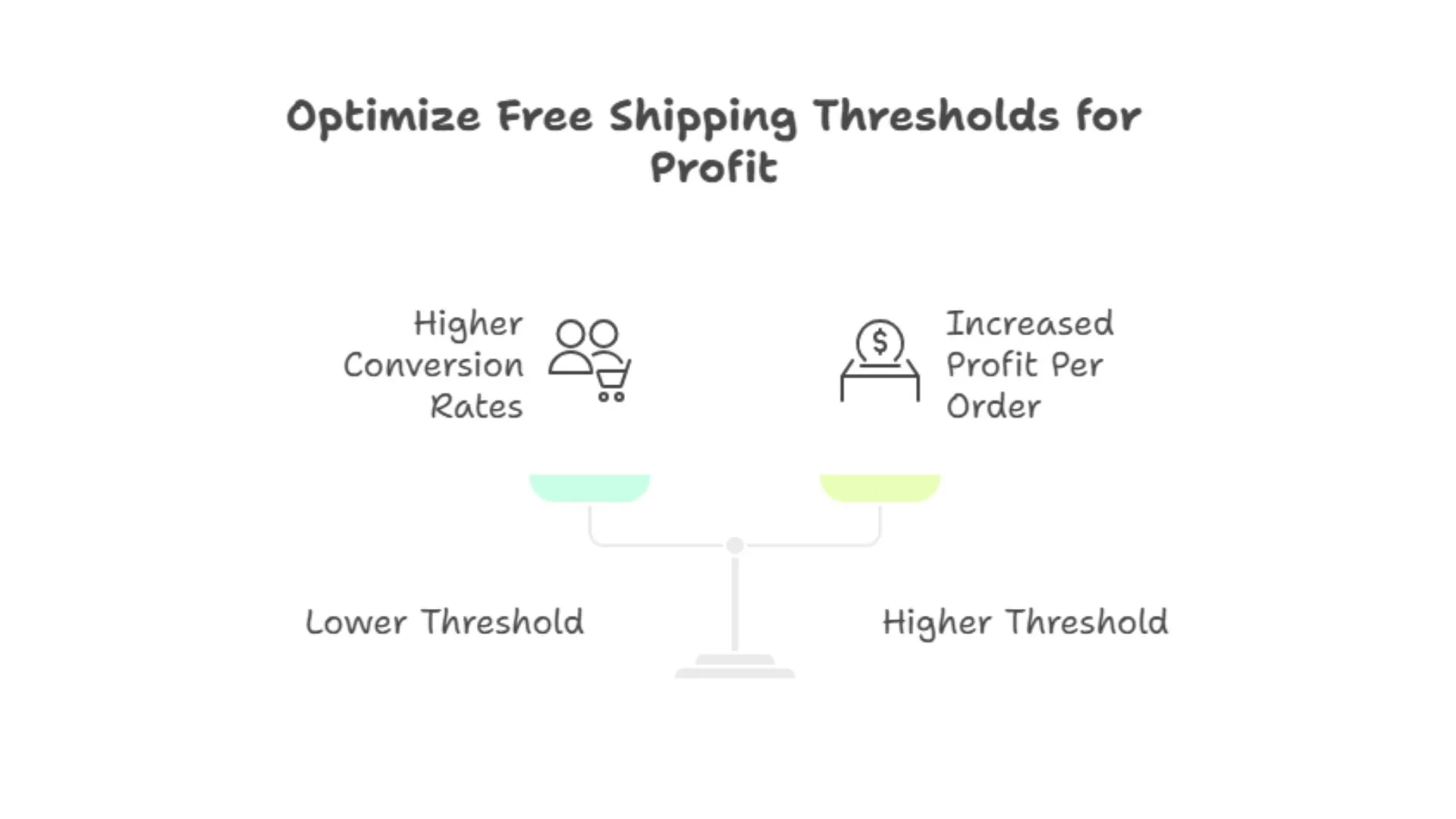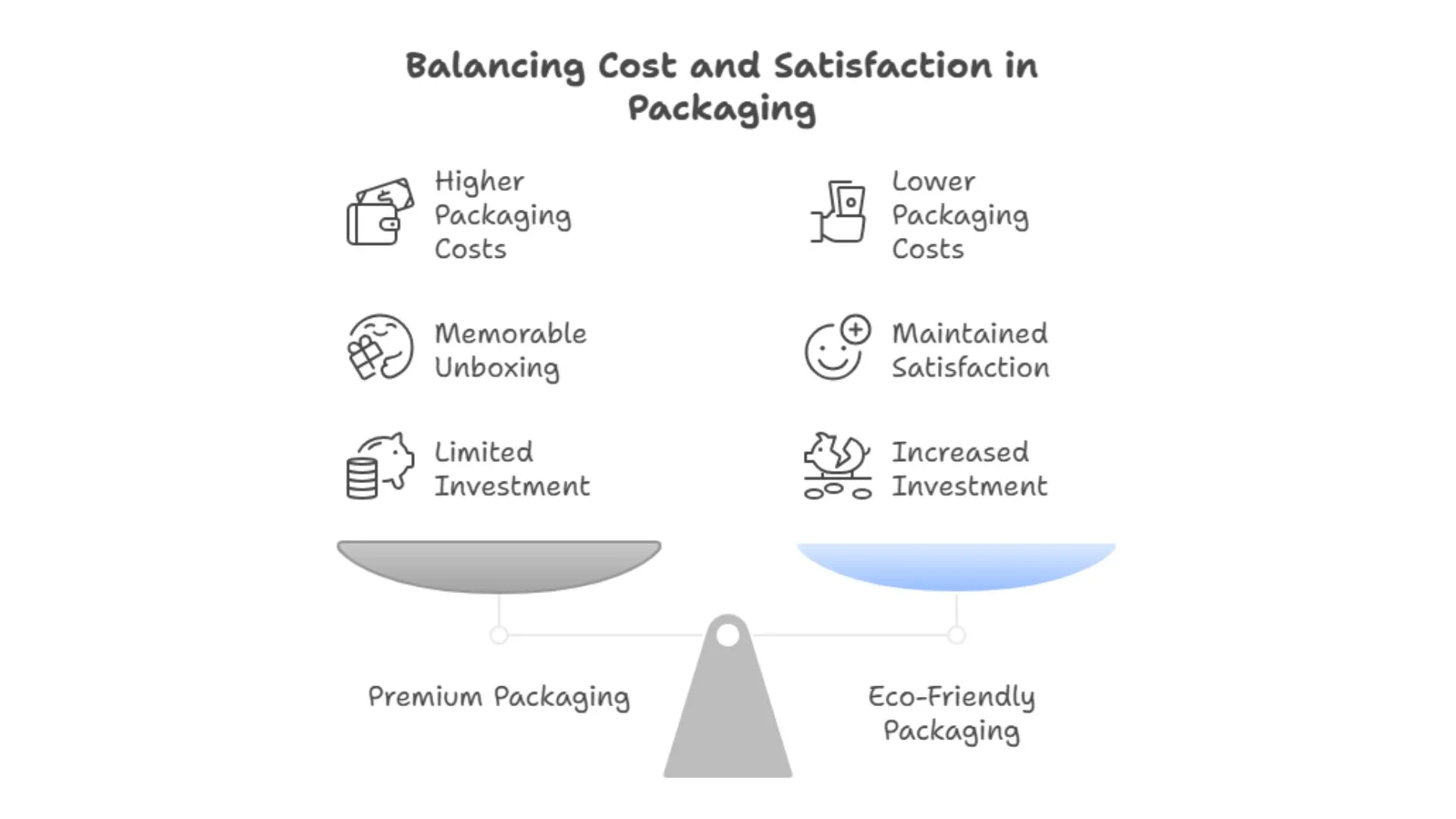When you’re running a D2C ecommerce brand in India, it’s natural to focus most of your energy on product quality, marketing campaigns, and figuring out how to increase conversion rate ecommerce by enhancing advertisements, optimizing landing pages, and conducting A/B testing.
Logistics, on the other hand, is often treated as a background function. As long as the orders get shipped, it’s fine. But once you dig into your profit and loss statement, a surprising pattern emerges. Many founders who believe they are losing money on ads are actually losing it on logistics. The costs are not always obvious; they hide behind neatly labelled “shipping charges” and operational invoices.

Scaling makes the problem worse. As you grow, even small inefficiencies in your supply chain and delivery operations can snowball into lakhs of rupees in losses every year. That is why understanding these hidden costs, and even running ecommerce A/B testing experiments around them, can be the difference between healthy margins and constant cash burn.
In ecommerce, Return to Origin or RTO is often underestimated. A customer places an order, you pay to ship it. They refuse the delivery, and you pay again to have it shipped back. You end up with a product that has travelled twice, potentially damaged, and requires repackaging before it can be sold again. In apparel, footwear, or fragile goods, many RTO products cannot be resold as new.

For example, an apparel brand shipping 1,000 orders a month with a 25% RTO rate could be losing several lakhs a year in wasted logistics. The worst part? These costs rarely appear as a separate line item in your reports.
This is where small experiments can have a big impact. Using an A/B Testing Platform like CustomFit.ai, you can test changes in your checkout flow. One variant might show a confirmation pop-up for COD orders, another might trigger a WhatsApp confirmation before dispatch. Even reducing RTO rates by 3–5% can mean significant annual savings.
Free shipping almost always boosts conversion rates, but that doesn’t mean your current threshold is optimal. If your average order value is ₹800 and you offer free shipping over ₹500, you might be attracting more orders but shrinking your profit per order.

Courier charges in India vary significantly depending on distance and delivery zones. What looks profitable in metro deliveries can quickly turn into losses when shipping to tier-3 towns. A more effective strategy is to conduct A/B testing on various free shipping thresholds.One version could offer free shipping over ₹500, another over ₹999. Track not just conversions, but net profit after shipping costs. With tools like CustomFit.ai, you can launch such tests without touching code, letting you react faster to real data.
Third-party logistics or 3PL partners can seem like a simple outsourcing choice. They handle storage, packing, and shipping. However, storage fees can gradually eat into your profits. You pay for pallet or bin space, even if it’s not fully utilised. Slow-moving products sit there month after month, generating costs without generating revenue. Seasonal surges might push you to rent more space at higher rates.
A skincare brand, for example, might find that certain SKUs with low demand are taking up valuable storage space for months, costing more in storage fees than they generate in sales. A practical fix is to run promotions targeted at clearing slow-moving inventory. You could use ecommerce A/B testing to offer targeted discounts to specific visitor segments before those products become financial liabilities.
Branded packaging is a great way to create a memorable unboxing experience. But the hidden costs go beyond printing boxes. There are minimum order quantities from packaging suppliers, wastage from printing errors, cost of protective fillers, tapes, and even the packaging used in return shipments.

One eco-friendly homeware brand reduced costs significantly by testing customer sentiment. They replaced premium printed boxes with minimal eco-friendly packaging and ran a quick survey. The result was an 18% drop in packaging expenses, no change in customer satisfaction, and extra budget to invest in faster delivery times.
You weigh your package at 0.95 kg, but your courier charges you for 1.2 kg. This can happen because of volumetric weight calculations or inconsistencies in weighing at the courier’s end. While each discrepancy seems small, over thousands of shipments it becomes a meaningful cost.
To control this, run quarterly audits. Randomly select a batch of orders, compare your recorded weight against courier billing, and dispute overcharges. Though tedious, this process can recover money that would otherwise be lost.
Same-day or next-day delivery is attractive for customers and can increase conversion rates. But it comes with higher expenses. Air freight costs more than ground shipping. Inventory may need to be split across multiple warehouses to achieve speed, which can lead to more frequent stockouts.

The key is to test before committing. You could run an A/B test where some visitors see next-day delivery options while others see standard delivery. Measure not just conversion lift but also profitability. If faster delivery attracts customers who don’t become repeat buyers, it may not be worth the expense.
Returns are a part of ecommerce, but their operational cost is often underestimated. Returned products need to be inspected, cleaned, repackaged, and restocked. For certain categories like clothing and cosmetics, many returned products cannot be resold at full price or at all.
Here, personalisation can play a role. With a platform like CustomFit.ai, you can identify high-return customers and adjust product recommendations or return policies for them. This can reduce return rates and improve the overall efficiency of your logistics.
Poor delivery experiences have hidden financial consequences. Delayed deliveries or damaged products increase customer service load, refunds, and replacements. They also reduce repeat purchase rates, which are critical in ecommerce profitability.
One brand improved their NPS scores by showing accurate delivery timelines based on the customer’s location. They used CustomFit.ai to detect location in real time and adjust the delivery promise displayed on product pages. This honesty reduced overpromising, improved satisfaction, and helped retain customers.
Many ecommerce businesses track total logistics spend but fail to break it down into actionable segments like pin code performance, courier partner efficiency, product category shipping costs, or COD vs prepaid order economics. Without this detail, it’s impossible to identify and fix systemic inefficiencies.
Pairing logistics cost breakdown with A/B testing data can reveal insights. For example, you might find that offering prepaid-only in high-RTO pin codes increases profit margins without hurting conversions.
Many people think A/B testing is only beneficial for ad creatives or landing page designs. In reality, ecommerce logistics can benefit greatly from experimentation. You can test free shipping thresholds, COD availability by region, delivery promises, or even packaging incentives. The results can lead to improvements in both conversion rates and profitability. The advantage of platforms like CustomFit.ai is that you can set up and run these tests without writing a line of code. This means marketing and operations teams can collaborate quickly to solve problems instead of waiting for developer resources.
For many D2C founders, logistics feels like a necessary cost to minimise. The reality is that logistics can be a powerful growth lever if managed strategically. By identifying hidden costs and running targeted A/B tests, you can improve efficiency, increase conversion rate ecommerce, and strengthen customer trust.
Small changes like adjusting free shipping thresholds, reducing RTO, or being transparent about delivery timelines can add up to big annual savings. The brands that win in India’s competitive ecommerce market will be the ones that keep testing, learning, and optimising—not just in marketing but across the entire customer journey.
How can A/B Testing help reduce ecommerce logistics costs?
It can reveal the most cost-effective shipping thresholds, test COD restrictions, and optimise delivery promises, helping balance higher conversions with lower operational costs.
What’s the most overlooked logistics cost in ecommerce?
RTO handling. It’s not just lost sales, but also double shipping costs, wasted packaging, and potentially unsellable inventory.
Can logistics improvements really increase conversion rate ecommerce?
Yes. Reliable delivery, accurate timelines, and smooth returns build trust, which directly improves conversion rates and customer lifetime value.
Is CustomFit.ai only for website testing?
No. While it is an A/B Testing Platform, it can also personalise delivery options, adjust COD availability, and display region-specific information that impacts logistics performance.
Should faster delivery be a default in my ecommerce store?
Not without testing. Use A/B testing to see if the increase in conversions and repeat purchases offsets the additional cost of faster delivery.
How often should I audit my logistics costs?
At least every quarter. Include courier weight verification, RTO analysis, and storage cost breakdown in your audits to stay in control of expenses.